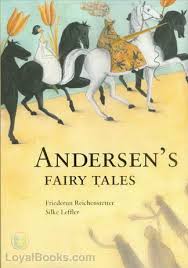Chapter I — A Beginning
byChapter I begins with a playful nudge at both author and reader, as Andersen gently mocks the familiar structure of fairy tales while deliberately setting the stage in the heart of Copenhagen, not some faraway land. The narrator winks at expectations, knowing readers might assume the story will trail through exotic cities like Rome or Naples, but instead, he grounds it in East Street, a place bustling with ordinary life. This decision adds charm and relatability. It suggests that magic and meaning don’t need grand foreign settings—they can be found in familiar corners, among ordinary people. In this choice, the story hints that even mundane settings hold potential for transformation. The tone is light, but beneath it lies a clever reflection on storytelling itself. Andersen invites readers to laugh at convention, even as he uses it to explore deeper themes. It’s a smart way to balance whimsy and insight while drawing the reader inward.
The narrative quickly settles into a social gathering hosted near the new market, where guests mingle, divided into card players and observers waiting for something more entertaining. The party feels more like a performance than a celebration, where appearances and future invitations take priority over genuine connection. As small talk dies down, the conversation takes an unexpected turn. Councillor Knap, dressed in outdated fashion, laments the lack of poetry in modern times. He praises the Middle Ages as a golden era, especially under King Hans, where nobility and happiness reigned. His romanticized view draws nods from some guests and gentle mockery from others. What begins as idle chatter slowly deepens into a passionate defense of the past. There’s a charm in watching a party transform from surface-level social posturing into a spirited philosophical debate. Through this, Andersen subtly critiques how society masks boredom with busyness.
As more guests join the discussion, the atmosphere begins to shift. The conversation becomes the true centerpiece of the evening, overtaking cards and polite formalities. People who were once silent now voice their thoughts, drawn in by the debate about progress versus tradition. This contrast between the quiet discontent of the present and the glorification of the past becomes a central theme. The characters romanticize a time they never lived in, believing it to be more meaningful than their own. Andersen gently exposes this irony. Nostalgia, he suggests, often comes from a place of dissatisfaction with now, not true knowledge of history. The guests speak of tournaments, music, and manners, but overlook hardship, disease, and inequality. The Middle Ages become a fantasy stage upon which they project their longing for passion, structure, and poetry—things they feel are lacking in their current lives.
The chapter also teases the gap between outward sophistication and inward emptiness. These well-dressed guests, armed with social scripts and polite gestures, are suddenly animated not by wealth or status, but by imagination. Their yearning for a different time reflects a shared restlessness, a desire to break free from the dull routine. This universal longing, to feel something more vivid and meaningful, is what makes the conversation so engaging. Andersen uses this to show how easily people wrap disappointment in dreams of the past. The watchful narrator allows the scene to unfold with both humor and compassion. He doesn’t judge the guests harshly but invites the reader to see through them—to notice how often people wish for something just because the present feels insufficient.
What makes this opening chapter powerful is its layered simplicity. On the surface, it’s about a party and a nostalgic debate. But underneath, it’s a mirror held up to society, showing how quickly we escape into fantasy when reality feels too ordinary. The playful tone never overshadows the core message: that our dissatisfaction with the present often blinds us to its value. In their praise of a long-gone age, the guests reveal their own disconnection from joy and authenticity. Andersen’s writing glides between comedy and insight, showing how even the most trivial conversations can uncover deeper truths. The partygoers don’t realize it yet, but their wish to live in another time sets the story’s magical wheels in motion.
From a broader perspective, this chapter taps into a timeless human tendency—to believe life was better “before.” Whether it’s the Middle Ages or childhood, people often look backward with rose-tinted lenses. Andersen uses this instinct as a doorway into the narrative, where fantasy and reality will soon blur. What begins as an evening of idle conversation promises to become a journey across time, desire, and perspective. The galoshes—still just an idea at this point—symbolize the thin line between wishing and becoming. In just a few pages, Andersen prepares readers for a tale that won’t just entertain, but invite reflection on what we chase, why we chase it, and whether the lives we live are already rich with wonder, if only we noticed.

